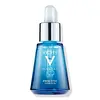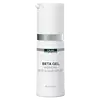What's inside
What's inside
 Key Ingredients
Key Ingredients

 Benefits
Benefits

 Concerns
Concerns

No concerns
 Ingredients Side-by-side
Ingredients Side-by-side

Water
Skin ConditioningNiacinamide
SmoothingPropanediol
SolventPEG-6
HumectantPEG/PPG/Polybutylene Glycol-8/5/3 Glycerin
HumectantGlycerin
HumectantMethyl Gluceth-20
HumectantPEG-60 Hydrogenated Castor Oil
EmulsifyingCarbomer
Emulsion StabilisingSodium Hyaluronate
HumectantTocopherol
AntioxidantHydroxyacetophenone
AntioxidantCitric Acid
BufferingVitreoscilla Ferment
Skin ConditioningCaprylyl Glycol
EmollientBiosaccharide Gum-1
HumectantMaltodextrin
AbsorbentButylene Glycol
HumectantWater, Niacinamide, Propanediol, PEG-6, PEG/PPG/Polybutylene Glycol-8/5/3 Glycerin, Glycerin, Methyl Gluceth-20, PEG-60 Hydrogenated Castor Oil, Carbomer, Sodium Hyaluronate, Tocopherol, Hydroxyacetophenone, Citric Acid, Vitreoscilla Ferment, Caprylyl Glycol, Biosaccharide Gum-1, Maltodextrin, Butylene Glycol
Water
Skin ConditioningGlyceryl Polymethacrylate
Glycerin
HumectantMethyl Gluceth-20
HumectantCaprylyl Glycol
EmollientBeta-Glucan
Skin ConditioningCarbomer
Emulsion StabilisingMagnesium Ascorbyl Phosphate
AntioxidantHamamelis Virginiana Leaf Extract
Skin ConditioningCarthamus Tinctorius Seed Oil
MaskingPolysorbate 20
EmulsifyingDimethicone
EmollientButylene Glycol
HumectantPalmitoyl Tripeptide-1
Skin ConditioningPalmitoyl Tetrapeptide-7
Skin ConditioningTocopherol
AntioxidantCurcuma Longa Root Extract
MaskingMatricaria Recutita Flower Oil
PerfumingPotassium Sorbate
PreservativeChloroxylenol
AntimicrobialWater, Glyceryl Polymethacrylate, Glycerin, Methyl Gluceth-20, Caprylyl Glycol, Beta-Glucan, Carbomer, Magnesium Ascorbyl Phosphate, Hamamelis Virginiana Leaf Extract, Carthamus Tinctorius Seed Oil, Polysorbate 20, Dimethicone, Butylene Glycol, Palmitoyl Tripeptide-1, Palmitoyl Tetrapeptide-7, Tocopherol, Curcuma Longa Root Extract, Matricaria Recutita Flower Oil, Potassium Sorbate, Chloroxylenol
 Reviews
Reviews

Ingredients Explained
These ingredients are found in both products.
Ingredients higher up in an ingredient list are typically present in a larger amount.
Butylene Glycol (or BG) is used within cosmetic products for a few different reasons:
Overall, Butylene Glycol is a safe and well-rounded ingredient that works well with other ingredients.
Though this ingredient works well with most skin types, some people with sensitive skin may experience a reaction such as allergic rashes, closed comedones, or itchiness.
Learn more about Butylene GlycolCaprylyl Glycol is a humectant and emollient, meaning it attracts and preserves moisture.
It is a common ingredient in many products, especially those designed to hydrate skin. The primary benefits are retaining moisture, skin softening, and promoting a healthy skin barrier.
Though Caprylyl Glycol is an alcohol derived from fatty acids, it is not the kind that can dry out skin.
This ingredient is also used as a preservative to extend the life of products. It has slight antimicrobial properties.
Learn more about Caprylyl GlycolCarbomer is a polymer of acrylic acid. Its main role is to create a gel consistency.
A high amount of carbomer can cause pilling or balling up of products. Don't worry, most products contain 1% or less of carbomer.
Glycerin is already naturally found in your skin. It helps moisturize and protect your skin.
A study from 2016 found glycerin to be more effective as a humectant than AHAs and hyaluronic acid.
As a humectant, it helps the skin stay hydrated by pulling moisture to your skin. The low molecular weight of glycerin allows it to pull moisture into the deeper layers of your skin.
Hydrated skin improves your skin barrier; Your skin barrier helps protect against irritants and bacteria.
Glycerin has also been found to have antimicrobial and antiviral properties. Due to these properties, glycerin is often used in wound and burn treatments.
In cosmetics, glycerin is usually derived from plants such as soybean or palm. However, it can also be sourced from animals, such as tallow or animal fat.
This ingredient is organic, colorless, odorless, and non-toxic.
Glycerin is the name for this ingredient in American English. British English uses Glycerol/Glycerine.
Learn more about GlycerinMethyl Gluceth-20 is a humectant. Humectants help draw moisture from the air to your skin.
It is created by combining polyethylene glycol with glucose.
Tocopherol (also known as Vitamin E) is a common antioxidant used to help protect the skin from free-radicals and strengthen the skin barrier. It's also fat soluble - this means our skin is great at absorbing it.
Vitamin E also helps keep your natural skin lipids healthy. Your lipid skin barrier naturally consists of lipids, ceramides, and fatty acids. Vitamin E offers extra protection for your skin’s lipid barrier, keeping your skin healthy and nourished.
Another benefit is a bit of UV protection. Vitamin E helps reduce the damage caused by UVB rays. (It should not replace your sunscreen). Combining it with Vitamin C can decrease sunburned cells and hyperpigmentation after UV exposure.
You might have noticed Vitamin E + C often paired together. This is because it is great at stabilizing Vitamin C. Using the two together helps increase the effectiveness of both ingredients.
There are often claims that Vitamin E can reduce/prevent scarring, but these claims haven't been confirmed by scientific research.
Learn more about TocopherolWater. It's the most common cosmetic ingredient of all. You'll usually see it at the top of ingredient lists, meaning that it makes up the largest part of the product.
So why is it so popular? Water most often acts as a solvent - this means that it helps dissolve other ingredients into the formulation.
You'll also recognize water as that liquid we all need to stay alive. If you see this, drink a glass of water. Stay hydrated!
Learn more about Water